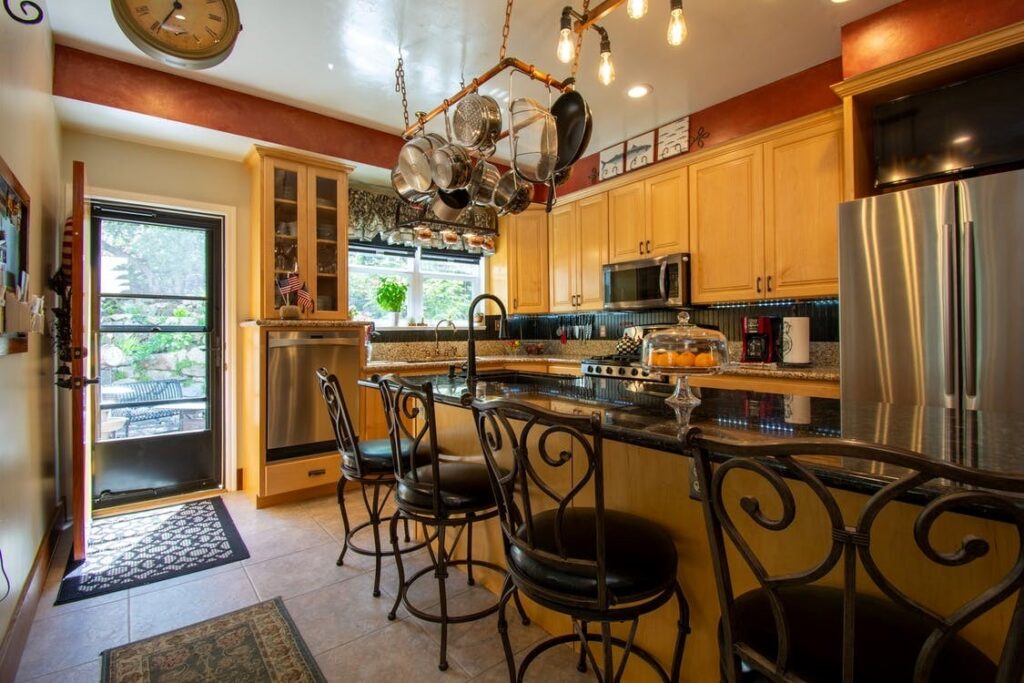The kitchen is the hearth and heart of your home. Designing a practical and aesthetically pleasing kitchen is not quite as easy as it sounds. Even the tiniest of mistakes would mar the flow and function. There are a lot of factors to be taken into consideration. Kitchen islands, cabinetry, lighting, appliances, décor, etc. It is equally important the kitchen too should be a reflection of your personal style, just like the rest of your home.
The layout should meet your everyday practical needs.
Here are a few of the most common layout mistakes, and simple ways of avoiding or fixing them –
- Circulation Space & Ventilation
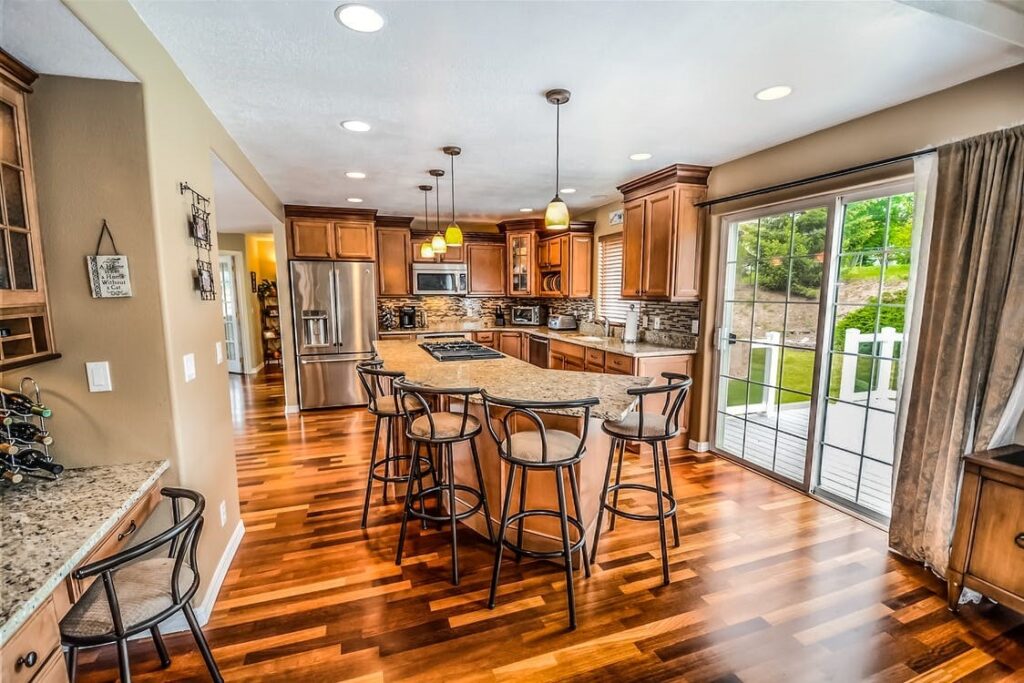
Image – Pixabay
If there isn’t enough circulation space in the kitchen, you would feel cramped. Also, it would force you to restrict the number of people who can use the kitchen at the same time.
A minimum of 4 feet of space between kitchen countertops should be provided for adequate circulation.
A poorly-ventilated kitchen would have a build-up of smoke, smells, soot, and grime. It is not only unpleasant but harmful to the user’s health too.
An open window or a chimney with high suction power help keep the kitchen clean free of smoke, steam, and grease. Range hoods, exhaust fans are quite effective in ensuring a supply of pure air in the kitchen.
- Efficiency & Functionality

Image – Dmitry Zvolskiy/ Pexels
An efficient kitchen is always desirable. If the kitchen lacks a good workflow, it would make your kitchen inefficient as you will spend a lot of time running back and forth between these three areas.
The work triangle is one of the oldest design principles. It helps bring the three most used areas of the kitchen closer, namely the refrigerator, sink, and stovetop. They should be located in relevance to each other so that there’s enough space to access them comfortably.
A lack of landing space makes navigation harder. Empty spaces near the refrigerator, sink, or stovetop help in setting down heavy things.
Also, functionality can be enhanced by storing most commonly used items like oils and spices near the cooking area; dishes, cutlery, etc near the sink/dishwasher. A lack of storage would become a bigger problem with time. It is advisable to plan out storage for all big and small items in the early stages of design.
Though Kitchen islands are helpful in increasing storage space and prep area, they don’t add value if the kitchen is less than 13 feet wide. Rather, they would hamper the traffic flow. In case you plan to have a kitchen island, ensure it is not an obstruction.
- Appliances

Image – Curtis Adams/ Pexels
Another common mistake is ending up with the wrong size appliances, or a cluttered kitchen due to a lack of customized storage space. It can lead to excessive protrusion and would spoil the overall look of the kitchen.
This can be avoided by choosing the appliances in the beginning rather than after the kitchen design is complete. Also, mapping out the placement area in advance makes the process easier.
It is important to measure the sizes of all small and large appliances to ensure you don’t end up with appliances sitting on the counter and creating unwanted clutter. If you take their dimensions into consideration in the design stage, you can have concealed, tailored storage created for them.
- Backsplash
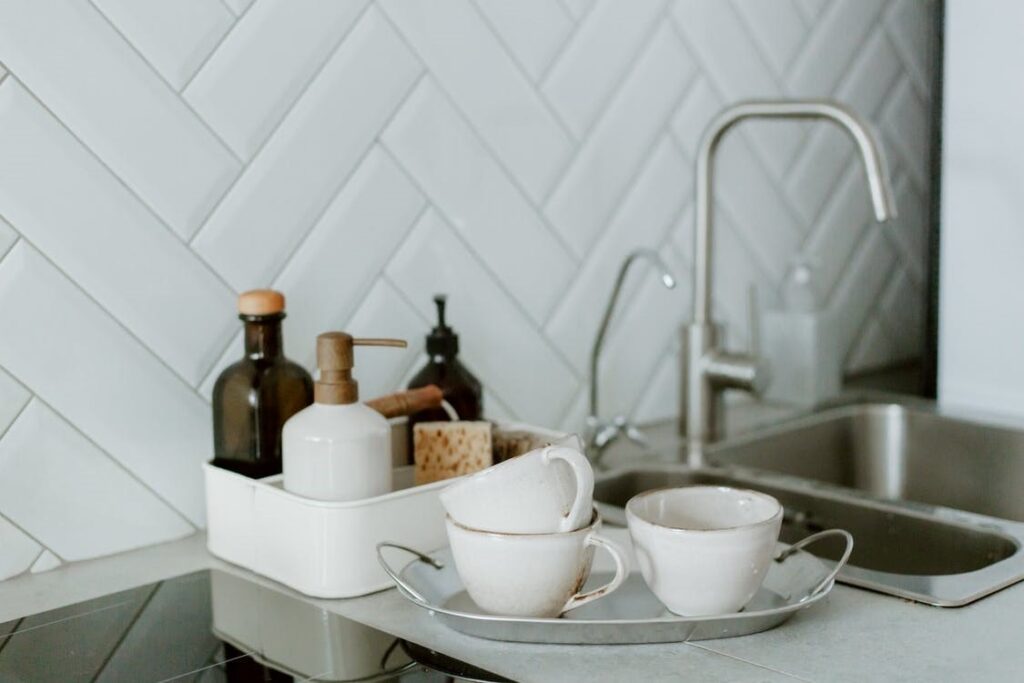
Image – Ron Lach/Pexels
Food and water spillage is common in every kitchen. No one likes a kitchen that is filled with oil, food, or water stains. It spoils the beauty of your kitchen. This problem can be rectified by installing backsplashes.
Backsplashes should be installed in areas where food and water splashes are visible, mainly behind the stovetop and between the countertop, and below the upper cabinets. They enhance both the beauty and functionality of the kitchen.
The backsplash should be in coordination with the kitchen’s colour and design theme.
- Lighting
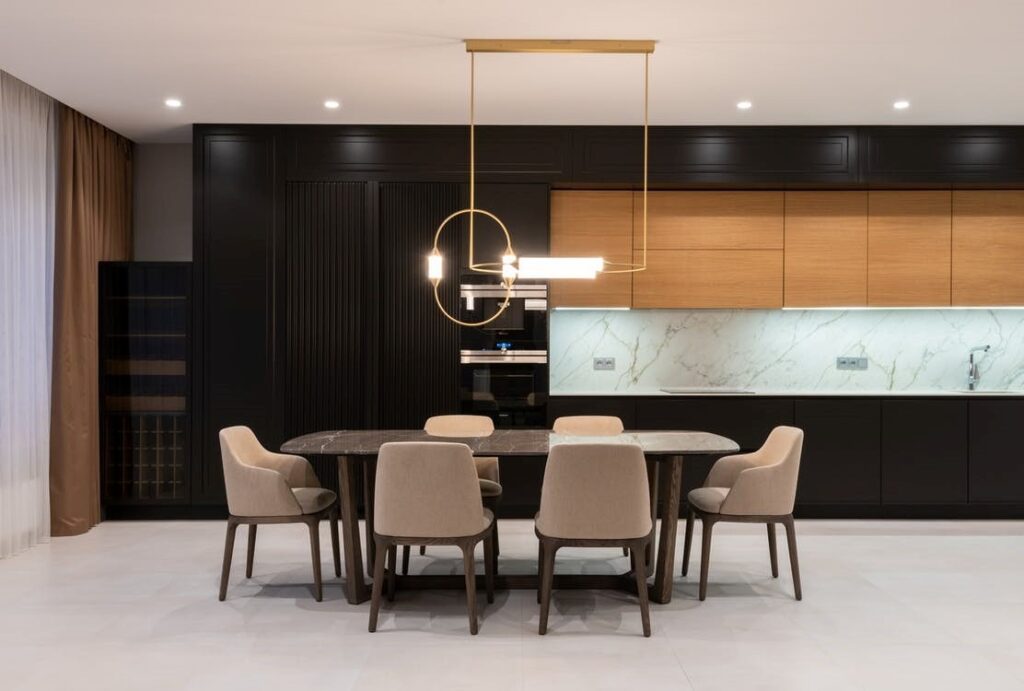
Image – Max Vakhtbovych/ Pexels
Lighting makes a big impact on the kitchen. A poorly lit kitchen is neither functional nor appealing. Though ceiling lights or recessed lights are economical and effective, they score low on aesthetics. You would end up with harsh and oversaturated lighting. On the other hand, some lighting options are visually appealing but might be completely impractical when it comes to working.
This can be fixed with a proper lighting plan. Aim to strike a balance between beauty and functionality. Recessed lighting should be paired with accent lighting to enhance the smoothness and appeal. Lights over the countertop are beautiful and functional. Light fixtures when positioned slightly in front of the user are more effective than overhead lights. Also, bulbs should be of sufficient brightness, so as to enable you to see clearly while working.
- Space Management

Image – Max Vakhtbovych/ Pexels
Storage can make a lot of difference in the efficiency and beauty of the kitchen. Inadequate storage space would lead to clutter and time wastage.
You should keep in mind your kitchen size, personal preferences, style, and storage requirements when planning a solution.
Floor-to-ceiling storage, storage behind filler panels, cabinet toe kicks are a few ways to increase storage.
Just ensure not to go overboard with shelves. Have enough open space else you might end up feeling claustrophobic in the kitchen.
- Cabinetry

Image – Max Vakhtbovych/ Pexels
Planning plays an important role in ensuring your cabinetry is not a mistake. Cabinets should be pleasing and functional with better storage. Size, material, location, and color should be taken into consideration while planning the cabinetry.
Small size cabinetry makes the kitchen look out of proportion and would be insufficient with your family’s growing needs. They should be deep enough for large plates.
Good quality cabinetry might be expensive, but it would prove beneficial in the long run.
While placing the cabinets, ensure not to block walkways when they are opened.
- Utilities
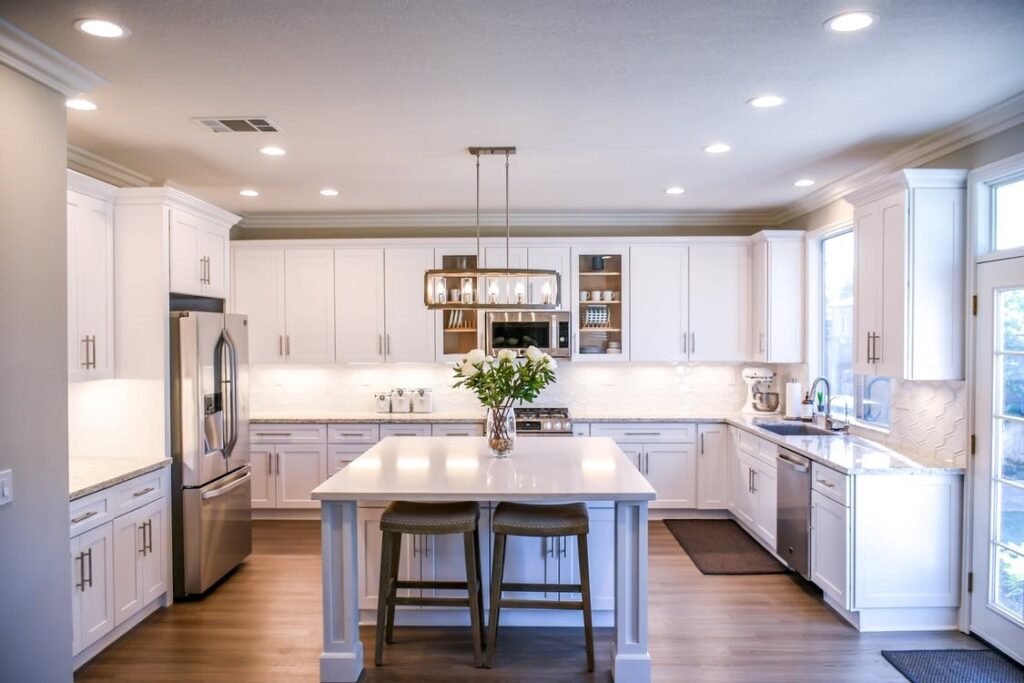
Image – Mark McCammon/ Pexels
If plumbing and electrical fixtures are not high on your priority list, it is time to revise it. They are crucial to the functioning of the kitchen, and if not done right the first time, it would prove to be a costly mistake, both in terms of effort and money.
A complete kitchen plan with attention to minute details like the position of the kitchen sink drain, vents, electrical points, etc should be charted before commencing on the redesign project.
Hopefully, this article helps you when you plan your kitchen layout. And in case, you are in need of professional guidance, we are right here!
